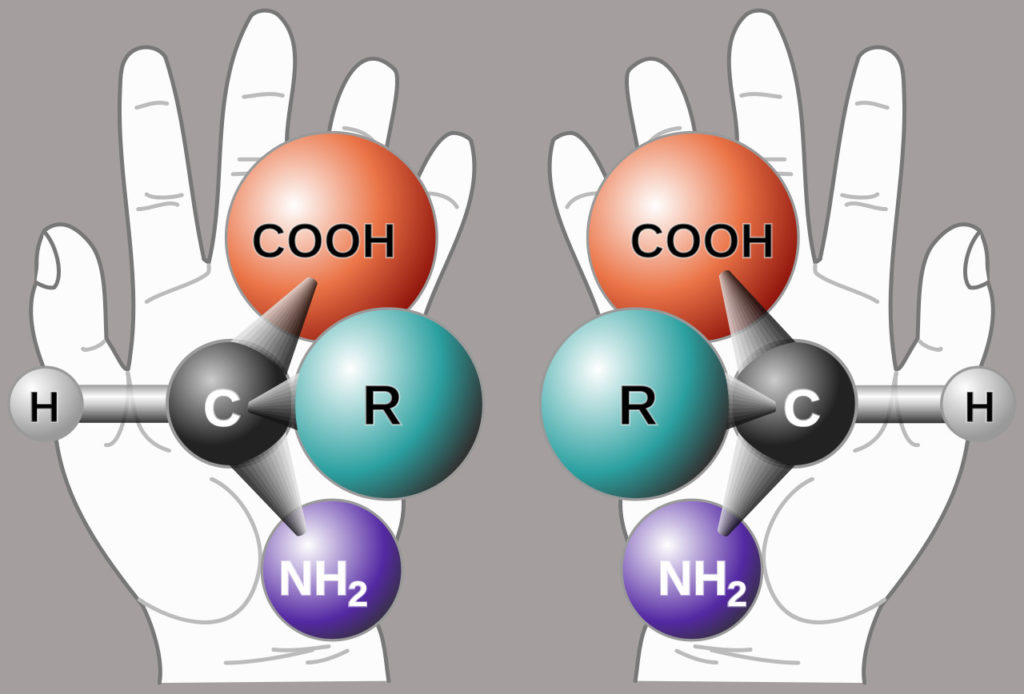Left-Handed Amino Acids
I Timothy 4:4
“For every creature of God is good, and nothing to be refused, if it be received with thanksgiving:”
 Most people remember from their high school days that amino acids are the building blocks from which proteins are built. However, most people are not aware of how special the arrangement of amino acid molecules is.
Most people remember from their high school days that amino acids are the building blocks from which proteins are built. However, most people are not aware of how special the arrangement of amino acid molecules is.
Amino acid molecules are asymmetric. They are compounds of the element carbon, and a carbon atom can have four bonds, all arranged in space, as if pointing to the corners of a tetrahedron. Sometimes a carbon atom will have four different groups attached to it. If that happens, then the molecule can exist in two mirror images. If the mirrored molecules are separated, then it is found that one arrangement rotates polarized light clockwise (“to the right”), while the other does so by the same angle counter-clockwise (“to the left”). But the arrangement of the four groups around the asymmetric carbon is not directly predictable. So the arrangement of the molecules is compared to molecules of right-rotating and left-rotating glyceraldehyde. The two arrangements (called enantiomers) of glyceraldehyde are given the prefixes D- (for dextro – right) and L- (for laevo – left). If the arrangement of a molecule is in the same format as D-glyceraldehyde, then it is also labeled as D-, even if it rotates light counter-clockwise.
All this complicated talk leads to this point. An experiment, producing an amino acid would always make 50% D and 50% L. Yet, all amino acids in nature have the L-form. And all natural sugar molecules have the D-form. This remarkable fact suggests that these natural molecules were not designed by random chance. Author: Paul F. Taylor
Prayer: Even if we peer down a microscope, we still see Your handiwork, Lord. Thank You for Your attention to every little detail, which brings honor to You. Amen.
Ref: Encyclopaedia Britannica, < https://www.britannica.com/science/isomerism/Enantiomers >, accessed 5/31/2018. Image: Public Domain.